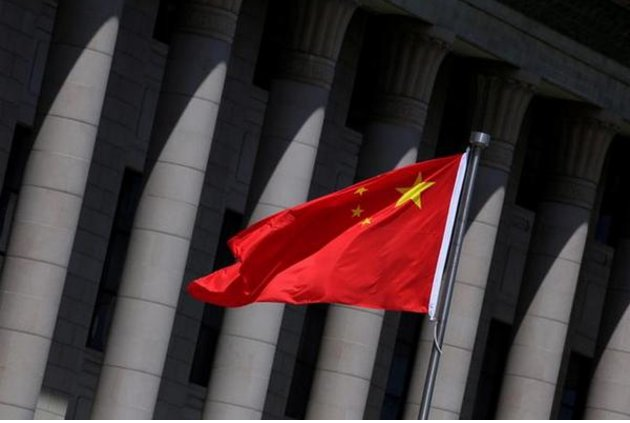China sees first net capital outflow in more than 2 years: report

China experienced a net outflow of funds in the last quarter of 2022 for the first time in 27 months, as exports declined and investments from abroad waned, says a media report.
During the October-December period of last year, China saw a net $11.2 billion move out of the country, according to a Nikkei analysis of data from the country’s State Administration of Foreign Exchange (SAFE), which tracks the monthly flow of funds through bank accounts.
The outflow constituted the largest capital outflow since the third quarter of 2019. The capital account figures reflect cross-border inflows and outflows of funds conducted by individuals and businesses using Chinese bank accounts.
Net outflows were the norm for China between 2014 and 2019, due largely to the anticipated depreciation of the Chinese yuan. China started experiencing net inflows around the start of 2020, just as the COVID-19 pandemic set in, says the report.
The country’s efforts to control the spread of the virus early on and restore economic activity resulted in a net influx of capital. Not only was China able to restore exports faster than other nations, government bonds attracted international investors looking to profit from anticipated interest rate differentials with other countries.
But as supply chains running through other nations recovered from the ravages of COVID-19, the surge in demand for Chinese exports subsided. In 2022, exports in the fourth quarter dipped below year-earlier numbers for the first time in two and a half years.
Last year, the Chinese economy entered a lengthy slowdown, worrying international investors enough to draw down investments in bonds. Foreigners typically purchase Chinese bonds through Hong Kong using channels such as Bond Connect.
At the end of December last year, the balance of yuan-denominated bonds held by foreigners stood at 3.38 trillion yuan ($493 billion). That balance had declined for four straight quarters compared to year-earlier figures. For the full year of 2022, the balance declined 15%, the first yearly drop recorded.
Meanwhile, China’s current account surplus remained substantial, dropping only around 10% on the year to $106.8 billion for the fourth quarter, according to SAFE. The current account figures include trading of goods and services.
This contrast between the current account surplus and net capital outflow of funds may be explained by dwindling earnings at foreign companies doing business in China, which can actually boost the current account surplus from China’s perspective.
On the other hand, if inward investment in China drops, there will be less money exchanged into yuan and deposited into Chinese bank accounts. Chinese exports are widely expected to lose steam this year due to the global economic slowdown. Although the end of zero-COVID is fueling China’s economic recovery, investing in the country is still clouded by risks, including tensions with the U.S. over semiconductors.
While China experienced a net inflow of $2.5 billion in funds through bank accounts in January, the volume was just 10% of the year-earlier figure. Even when accounting for the impact of the Lunar New Year holiday, the figure was still 40% below that of February last year, the month in which the holiday fell in 2022.
Meanwhile, the balance of bonds held by foreigners at the end of January fell by 106.5 billion yuan from the end of December. If China continues to struggle to draw funds, the trend could impact the globalization of the yuan, Belt and Road investments and other initiatives to challenge the U.S.-led global order.
https://asia.nikkei.com/Economy/China-sees-first-net-capital-outflow-in-more-than-2-years
-
Book Shelf
-
 Book Review
DESTINY OF A DYSFUNCTIONAL NUCLEAR STATE
Book Review
DESTINY OF A DYSFUNCTIONAL NUCLEAR STATE
- Book ReviewChina FO Presser Where is the fountainhead of jihad?
- Book ReviewNews Pak Syndrome bedevils Indo-Bangla ties
- Book Review Understanding Vedic Equality….: Book Review
- Book Review Buddhism Made Easy: Book Review
- Book ReviewNews Elegant Summary Of Krishnamurti’s teachings
- Book Review Review: Perspectives: The Timeless Way of Wisdom
- Book ReviewNews Rituals too a world of Rhythm
- Book Review Marx After Marxism
- Book Review John Updike’s Terrorist – a review
-
-
Recent Top Post
-
 Commentaries
Impasse over BRI Projects in Nepal
Commentaries
Impasse over BRI Projects in Nepal
-
 CommentariesNews
Yet another Musical Chairs in Kathmandu
CommentariesNews
Yet another Musical Chairs in Kathmandu
-
 CommentariesTop Story
Spurt in Anti-India Activities in Canada
CommentariesTop Story
Spurt in Anti-India Activities in Canada
-
 NewsTop Story
Nepal: Political Stability Under Threat Again
NewsTop Story
Nepal: Political Stability Under Threat Again
-
 NewsTop Story
Accountability Tryst With 2024 Ballot….
NewsTop Story
Accountability Tryst With 2024 Ballot….
-
 NewsTop Story
What Would “Total Victory” Mean in Gaza?
NewsTop Story
What Would “Total Victory” Mean in Gaza?
-
 CommentariesTop Story
The Occupation of Territory in War
CommentariesTop Story
The Occupation of Territory in War
-
 CommentariesTop Story
Pakistan: Infighting in ruling elite intensifies following shock election result
CommentariesTop Story
Pakistan: Infighting in ruling elite intensifies following shock election result
-
 CommentariesTop Story
Proforma Polls in Pakistan Today
CommentariesTop Story
Proforma Polls in Pakistan Today
-
 CommentariesTop Story
Global South Dithering Away from BRI
CommentariesTop Story
Global South Dithering Away from BRI
-
AdSense code



















